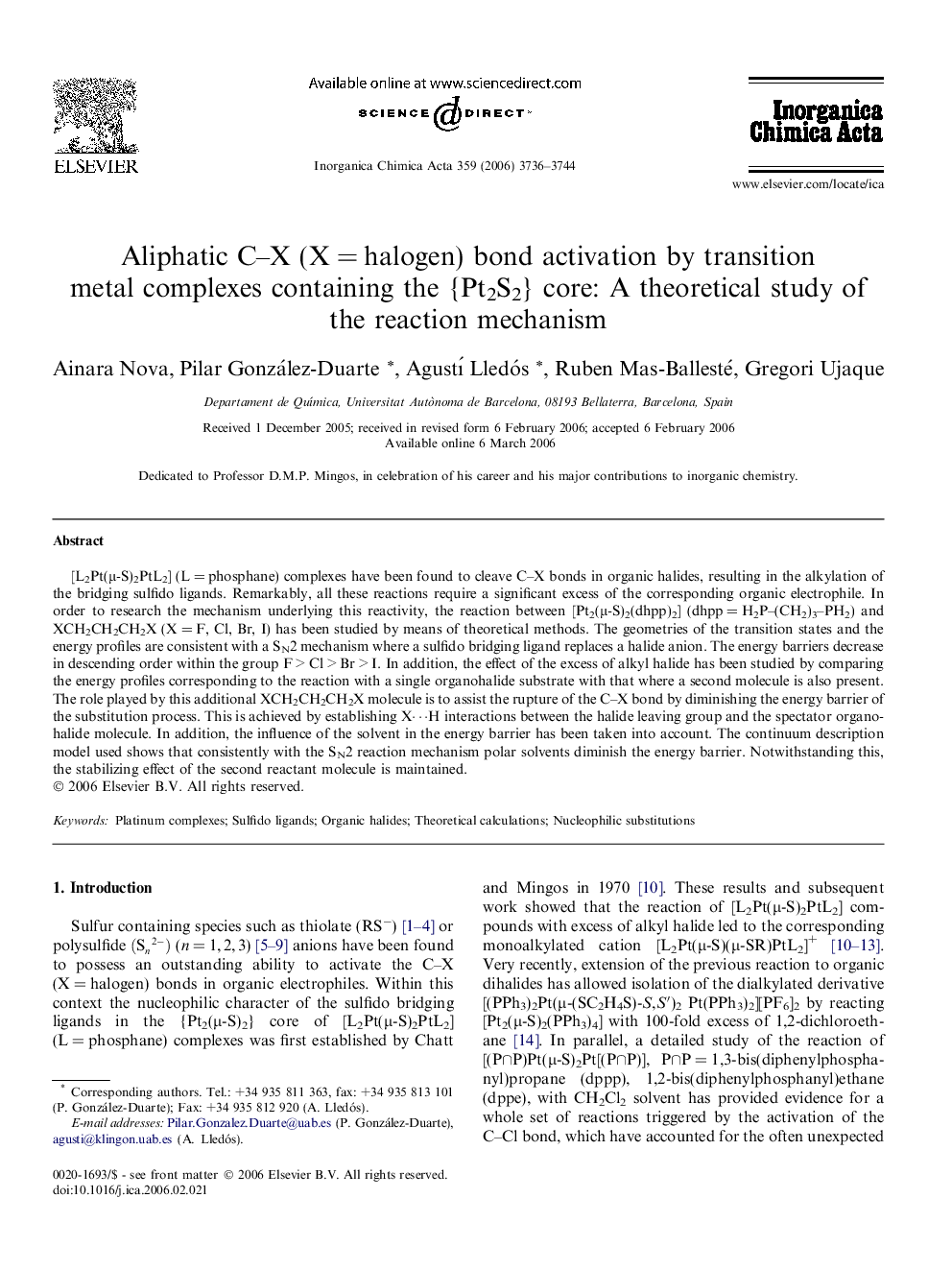| Article ID | Journal | Published Year | Pages | File Type |
|---|---|---|---|---|
| 1312981 | Inorganica Chimica Acta | 2006 | 9 Pages |
[L2Pt(μ-S)2PtL2] (L = phosphane) complexes have been found to cleave C–X bonds in organic halides, resulting in the alkylation of the bridging sulfido ligands. Remarkably, all these reactions require a significant excess of the corresponding organic electrophile. In order to research the mechanism underlying this reactivity, the reaction between [Pt2(μ-S)2(dhpp)2] (dhpp = H2P–(CH2)3–PH2) and XCH2CH2CH2X (X = F, Cl, Br, I) has been studied by means of theoretical methods. The geometries of the transition states and the energy profiles are consistent with a SN2 mechanism where a sulfido bridging ligand replaces a halide anion. The energy barriers decrease in descending order within the group F > Cl > Br > I. In addition, the effect of the excess of alkyl halide has been studied by comparing the energy profiles corresponding to the reaction with a single organohalide substrate with that where a second molecule is also present. The role played by this additional XCH2CH2CH2X molecule is to assist the rupture of the C–X bond by diminishing the energy barrier of the substitution process. This is achieved by establishing X⋯H interactions between the halide leaving group and the spectator organohalide molecule. In addition, the influence of the solvent in the energy barrier has been taken into account. The continuum description model used shows that consistently with the SN2 reaction mechanism polar solvents diminish the energy barrier. Notwithstanding this, the stabilizing effect of the second reactant molecule is maintained.
Graphical abstract[L2Pt(μ-S)2PtL2] (L = phosphane) complexes have been found to cleave C–X bonds provided a significant excess of the corresponding alkyl halide is present in the reaction medium. Theoretical calculations show that this excess may assist the cleavage of the C–X bond by lowering the energy barrier of the SN2 substitution processFigure optionsDownload full-size imageDownload as PowerPoint slide
